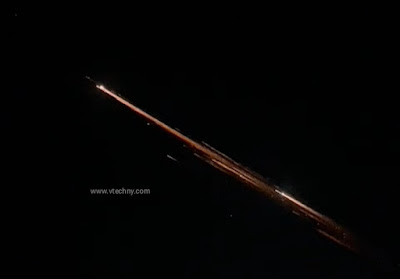Meteor showers occur when dust or particles from asteroids or comets enter Earth's atmosphere at very high speed. When they hit the atmosphere, meteors rub against air particles and create friction, heating the meteors. The heat vaporizes most meteors, creating what we call shooting stars.
If you can tolerate the scorching temperatures, there’s a bright side to April’s summer days, especially if you are a star-gazer: stunning, clear skies. They provide an impeccable chance to cherish the beauty of our cosmic neighbourhood, and this April has some big astronomical events in store - ranging from meteor showers to the conjunction of planets.
Here’s a complete list, so you can clear your calendars in advance and pin down the dates:
April 2
Today's Meteors Shower🔥
April 4
Saturn and Mars will make a close approach during the dawn and be visible in the same field of the telescope. The pair can be spotted in the constellation Capricornus before sunrise.
April 16
This would be the night of a fully illuminated Moon. Depending on which part of the world you live in, this particular Full Moon is also referred to as the Pink Moon, Sprouting Grass Moon, the Growing Moon, Fish Moon and the Egg Moon.
April 21-22
Sky-watchers can witness peak Lyrid meteor shower on these nights. Named after the constellation Lyra, it is regarded as one of the oldest recorded meteor showers. The annual meteor shower is usually active between April 16 to 25, and produces over 20 meteors per hour on peak nights. All you need to watch them is a clear sky, away from city lights.
April 25
Early risers will be able to spot Saturn, Mars, Venus, Jupiter and the Moon in the morning sky. The alignment can be spotted on the eastern horizon.
April 29
Planet Mercury will reach its Greatest Eastern Elongation of 20.6 degrees from the Sun. The planet can be spotted in the western sky just after sunset.
April 30
A partial solar eclipse will gaze the sky, but it will only be visible from southern South America, parts of Antarctica, and over the Pacific and Atlantic Oceans.














0 Comments